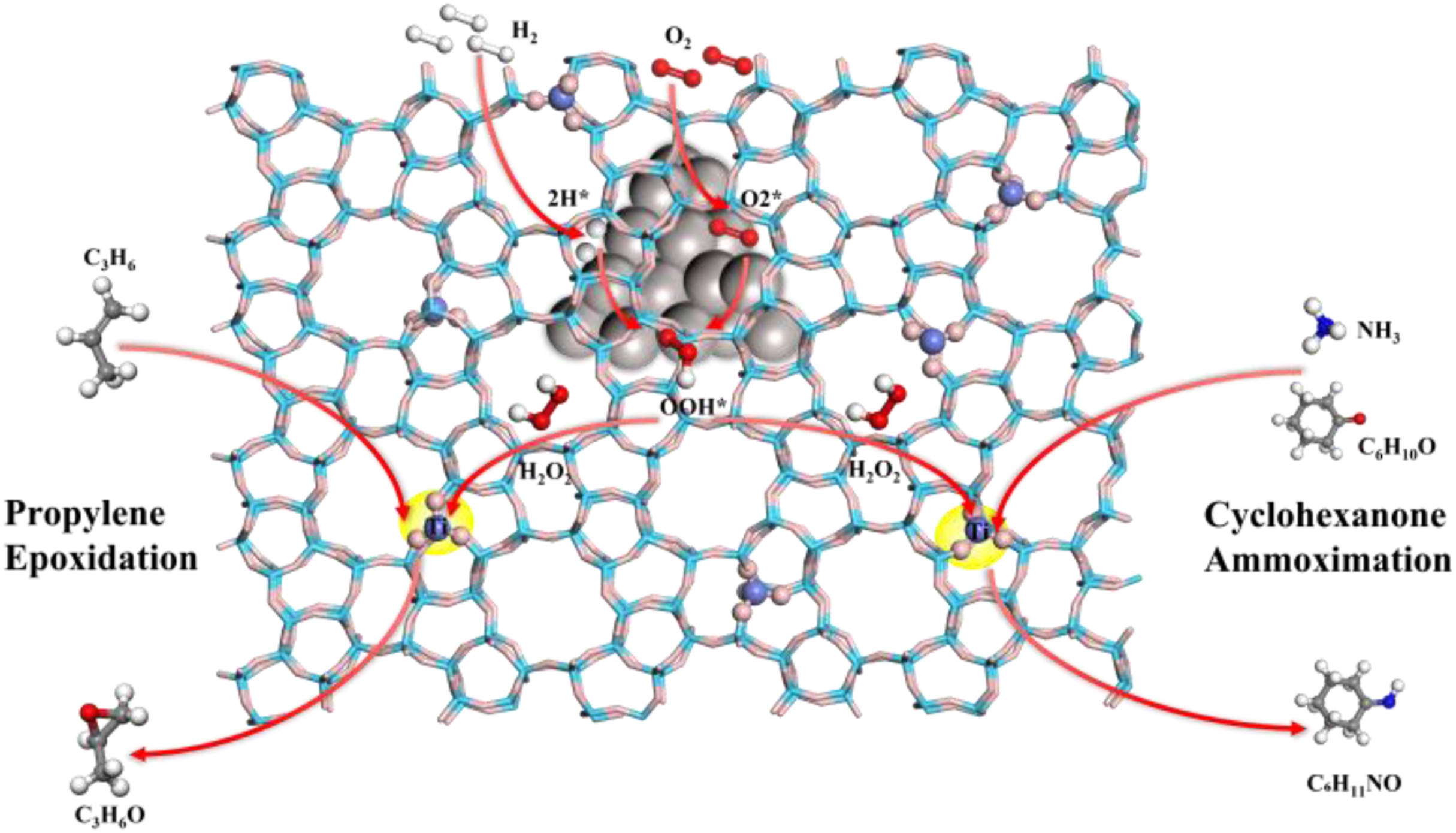
Xin Dong, Tianqi Chen, Jing Liang, Lei Wang, Huajie Wu, Zhijin Xu, Junhua Luo, Lina Li*
Zhipeng Wan, Hao Xu*, Peng Wu
Chin. J. Struct. Chem., 2024, 43: 100298. DOI: 10.1016/j.cjsc.2024.100298
June 15, 2024
ABSTRACT
For many tandem chemical transformations utilizing H2O2 (and its intermediates), it's crucial to ensure that the rate of oxidant synthesis aligns with the secondary component's capacity to utilize the oxidant species for selective oxidation. This necessitates precise design and control of dual-functional catalysts to increase the utilization efficiency of H2, primarily through preventing H2O2 decomposition and competitive substrate hydrogenation. Another concern is associated with the increased cost of precious metals, which can be addressed by minimizing their loading or substituting them with less expensive metals while maintaining high production efficiency. Finally, further elucidation of the synergistic mechanism between metals and supports in dual-functional catalytic system is still needed, allowing for designing more active catalytic systems






